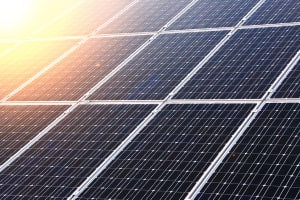This free online course on solar radiation and solar photovoltaic (PV) systems investigates some of the basic techniques and measures adopted by solar scientists and engineers to estimate and capture solar radiation. We begin by explaining the need for assessing and predicting the availability of solar radiation, not only in different parts of planet Earth but also in extraterrestrial regions. We then study various equations and relationships that report radiation values, with meteorological parameters like sunshine hours, cloud cover and precipitation. In the absence of accurate sunshine data, these correlations are used to estimate the monthly, daily and hourly average levels of radiation available on any horizontal or inclined surface under clear or cloudy skies. With the help of examples, we demonstrate how to use these equations and correlations to predict radiation availability and design efficient solar energy systems. This can help you understand some of the challenges faced by engineers and designers as the sun’s energy quickly grows in importance as the most reliable and clean available energy source.
The course then moves on to the design of PV systems for the conversion of solar energy into electricity for mass consumption. This includes attention to PV cell’s construction and manufacturing process, the specifications of solar modules, arrays, application and working principles. We also delve into the concepts of ‘doping’, fermi energy levels, p-n junction, drift and diffusion current, band-gap energy and energy-loss mechanisms. We also unpack electrical parameters such as the current-voltage (I-V) characteristics of solar cells, the effect of insolation and temperature on I-V characteristics, efficiency of a solar cell, equivalent circuit diagrams and theoretical maximum power. Like all systems, PV conversion has its difficulties and challenges and we take you through difficulties like cell ‘mismatch’, the effect of shadows, maximization of solar PV output and load matching. We provide solutions to these difficulties, such as mechanical and electrical tracking and the use of bypass diodes. Finally, we lay out the improvements made by different generations of PV technology.
This course suits anyone with some understanding of physics, light, electricity and thermodynamics who would like to expand their awareness of solar energy engineering and technology. Explore this exciting field to stay at the cutting edge of the latest sustainable practices. This engineering discipline will become more and more relevant as the need to find alternative energy sources on a global scale becomes more urgent. Building a career in energy engineering or a related field can be extremely rewarding as the planet faces disaster without such professionals pushing the boundaries of what’s possible. Sign up and work towards a brighter future.
What You Will Learn In This Free Course
View All Learning Outcomes View Less All Alison courses are free to enrol study and complete. To successfully complete this course and become an Alison Graduate, you need to achieve 80% or higher in each course assessment. Once you have completed this course, you have the option to acquire an official , which is a great way to share your achievement with the world.
Your Alison is:
- Ideal for sharing with potential employers
- Great for your CV, professional social media profiles and job applications.
- An indication of your commitment to continuously learn, upskill & achieve high results.
- An incentive for you to continue empowering yourself through lifelong learning.
Alison offers 3 types of s for completed courses:
- Digital : a downloadable in PDF format immediately available to you when you complete your purchase.
- : a physical version of your officially branded and security-marked , delivered directly to your address when you complete your purchase.
All s are available to purchase through the Alison Shop. For more information on purchasing Alison , please visit our FAQs. If you decide not to purchase your Alison , you can still demonstrate your achievement by sharing your Learner Record or Learner Achievement Verification, both of which are accessible from your Account Settings.














 Avg Hours
Avg Hours CPD Accredited
CPD Accredited
 Total XP:
Total XP: 
 Knowledge & Skills You Will Learn
Knowledge & Skills You Will Learn







